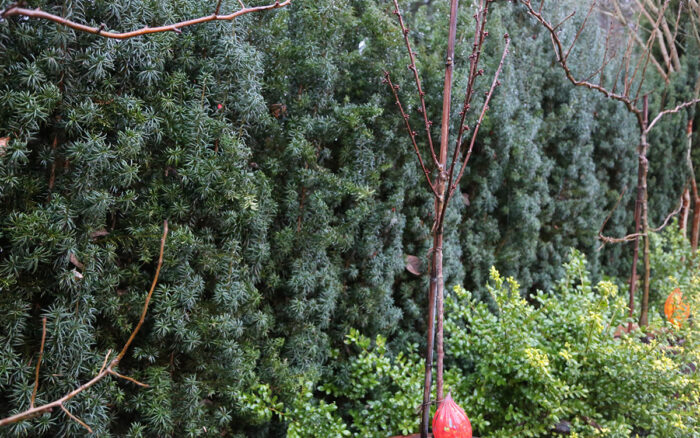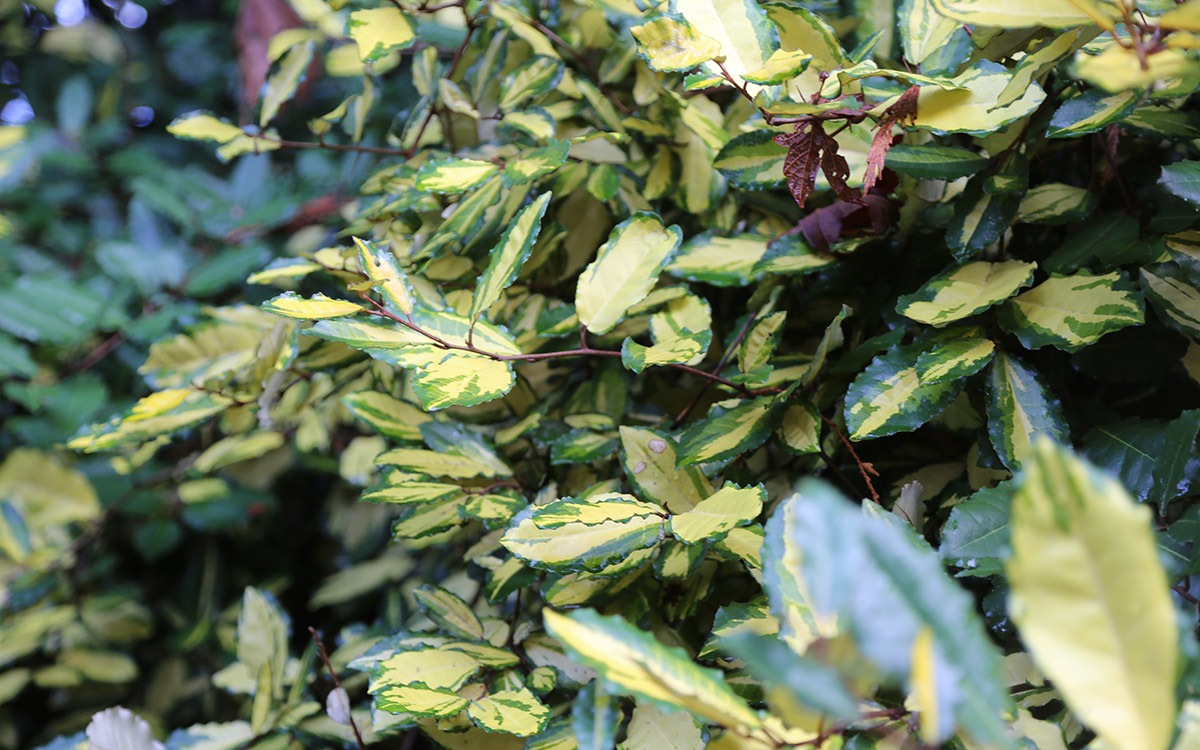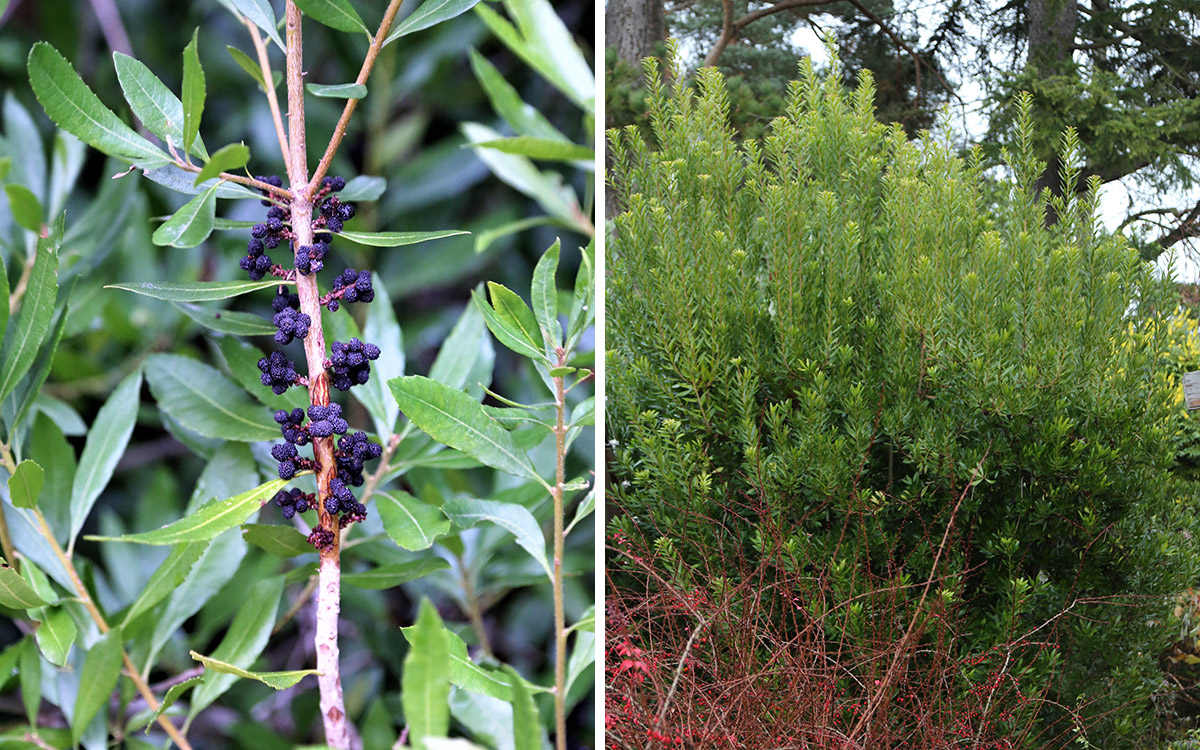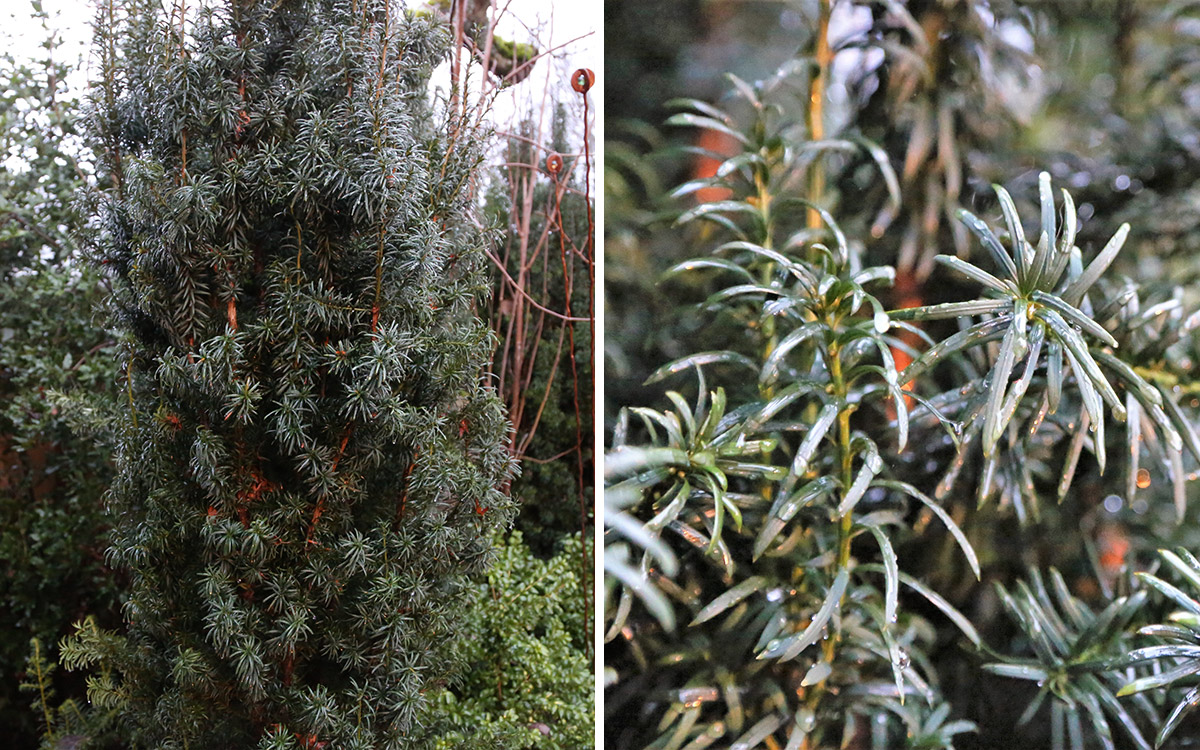
Winter in the Northwest is a great time to appreciate the wonderful job broadleaf evergreen plants do in our gardens. They create structure in designs and act as windbreaks and wildlife habitats. Evergreen hedges often disappear during the rest of the year, when they are outshined by other flowering plants, but during winter they have an opportunity to shine themselves. Below are a few of my favorite picks for evergreen hedging plants for the Northwest. The shrubs mentioned here are all tolerant of a wide variety of soil types so long as they are not standing in water, and all three of them are drought tolerant once established.

‘Maculata’ thorny elaeagnus
Elaeagnus pungens ‘Maculata’, Zones 7–9
This wonderful broadleaf evergreen shrub is an excellent choice for winter color and interest. ‘Maculata’ thorny elaeagnus makes an impressive and quite impenetrable thorny hedge, which makes it an excellent pick for adding more habitat for wildlife. The beautiful, variegated leaves are green, gold, and yellow with silvery undersides, and they create a bright spot in any larger garden. I love the unique pattern that each leaf presents. ‘Maculata’ blooms in winter with tiny, hidden silvery-white flowers that are bell-shaped and extremely fragrant. They will perfume your entire garden, perhaps to lure you outside in winter. This shrub gets pretty big, growing approximately 15 feet tall and wide, so make sure that you have the space for it or the patience to keep it in check with regular pruning and maintenance.

Pacific wax myrtle
Morella californica, Zones 7–10
Pacific wax myrtle is a handsome and hardy hedging plant that’s native to our region. As such, it performs well in Northwest gardens, creating excellent, dense hedges and windbreaks. This shrub can grow up to 30 feet tall and 10 to 20 feet wide, so give it some room in your garden or regular maintenance to keep it smaller. The narrow, glossy, deep green leaves have serrated edges. The shrub itself has a lovely, upright growth habit; the visual effect reminds one of a feather duster. Wildlife love to eat the abundant dark purple berries that resemble peppercorns in late winter. This shrub can be easily incorporated into “rewilding” mixed borders that many gardeners and garden designers are creating in urban gardens in the Pacific Northwest.

Irish yew
Taxus baccata ‘Fastigiata’, Zones 6–8
This is my all-time favorite evergreen shrub and hedging plant for small urban gardens or private patio spaces. Irish yews have small dark green needles with pointed tips that have a very soft texture. Plant Irish yew in tight rows for wonderful hedges, plant it a little farther apart for mixed borders, or plant it in an open planting design. Irish yew holds its needles in an upright pattern, resembling a bottlebrush (Callistemon spp. and cvs., Zones 7–11). In late fall, the female plants have dusty red fruits called arils. These fruit seeds are toxic to humans and pets, so be cognizant of where the plants are placed in the garden. If not pruned, Irish yew will reach 8 feet tall and 3 feet wide, although it can be pruned to control for size or for a more formal look.
The sparseness of gardens in winter helps us to appreciate the wonderful job evergreen plants do in our outdoor spaces the rest of the year, adding foundational structure and texture. While there is an endless list of plants that can do this job, I hope the shrubs mentioned here will help you think about incorporating evergreen hedges, large and small, into your garden. You will enjoy them year-round as a backdrop to your perennial plants, and our much-beloved feathered friends will enjoy them as well. For more evergreens for the Northwest, check out these articles:
—Jason Jorgensen owns and operates Third Spring Landscape Design in Seattle.


















Comments
Beware of Elaeagnus invasive status. See the following link at Oregon State University for details. https://landscapeplants.oregonstate.edu/plants/elaeagnus-pungens
Log in or create an account to post a comment.
Sign up Log in